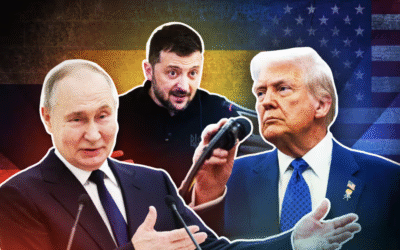Two of the most forceful players in world trade and policy-making are the United States and the European Union. Although their alliance is based on same democratic values and economic interests, policy differences—especially on trade, climate, and digital economy—often cause friction. These differences challenge their capacity to coordinate well on the world scene and present both chances for innovation and conflict. Analysing the dynamics of the US-EU relationship can help one to evaluate its impact on world commerce, security, and international policy guidelines.
Mutual growth and economic interdependence
The US and EU economies are intimately interconnected, constituting about a third of global commerce. This cooperation not only improves the economy of any country but also shapes world trade norms. To show the extent of their economic reliance, the US-EU trade in goods for 2023, for example, comes at almost $830 billion. Furthermore significant is foreign direct investment (FDI), with American businesses extensively investing in Europe and vice versa generating millions of employment.
One striking illustration of this interconnectedness is found in the car industry. Companies like BMW and Volkswagen, domiciled in the EU, have substantial production sites in the United States, while American giants like Ford and General Motors have strong market presences across Europe. This cross-investment produces jobs and fosters technical innovation, benefiting both economies. The rivalry between Boeing-Airbus also shows mutual progress since it has driven aerospace technological innovations under competitive pressure.

However, initiatives to further standardise laws, such as through the now-shelved Transatlantic Trade and Investment Partnership (TTIP), have faced hurdles. Disagreements over regulatory standards—such as food safety rules addressing genetically modified organisms (GMOs) and hormone-treated beef—highlight the difficulties of deeper integration, especially in the setting of common economic interests.
Key Areas of Conflict
Trade Tariffs and Subsidies
One of the most prominent areas of conflict has been subsidies in the aircraft sector, with the EU supporting Airbus and the US supporting Boeing. This competition has led to the longest-running trade dispute in the history of the World Trade Organization (WTO), extending nearly two decades. In 2019, the WTO approved the US to apply $7.5 billion in tariffs on EU goods in retaliation for subsidies to Airbus, causing the EU to later impose $4 billion in penalties on US imports. This tit-for-tat tariff policy underlined the difficulty both parties confront in ensuring fair competition while supporting critical businesses.
Digital Economy and Taxation
The EU’s drive to impose digital services taxes on huge technology corporations has also led to tension. In 2021, France enacted a 3% digital tax on revenues made by digital giants like Google, Amazon, and Facebook from French consumers, saying that these businesses earn considerable profits in Europe without a matching tax contribution.

While other EU states explored similar steps, the US perceived these taxes as discriminating toward American firms, even threatening penalties on French exports as retribution. A temporary compromise was found through an OECD-brokered global tax reform plan, but conflicts linger about the extent and application of digital taxes.
Climate
Divergent climate objectives create another obstacle in US-EU relations. The EU’s European Green Deal, published in 2019, defines an ambitious objective of becoming carbon-neutral by 2050, which includes the introduction of a Carbon Border Adjustment Mechanism (CBAM). This approach would charge imports based on their carbon content, potentially harming US exporters. While the Biden administration has taken moves toward tougher climate policy, including rejoining the Paris Agreement, US regulatory frameworks remain less aggressive than those in the EU. The CBAM idea has been a topic of dispute, with US businesses voicing concerns about its impact on trade competitiveness and potential retaliatory tariffs.
Data Privacy and Security
Data governance and privacy laws have also produced friction, notably with the implementation of the EU’s General Data Protection Regulation (GDPR) in 2018. GDPR applies tough data protection standards that affect US IT firms operating in Europe, requiring them to alter their data handling procedures.
One case demonstrating the influence of GDPR on US-EU ties is the Schrems II verdict by the European Court of Justice, which invalidated the Privacy Shield agreement for data transfers between the US and EU. This verdict led firms to explore alternative, more complex means to legally move data across the Atlantic, illustrating the high consequences of differing privacy standards.
Defense Spending and Security Commitments
Although not a direct economic issue, defense spending typically influences US-EU economic relations. The US has constantly pressed European states to enhance their NATO defense contributions, emphasizing security duties. The Trump administration, for example, threatened to levy tariffs on European cars if NATO expenditure obligations were not reached. While the Biden administration has adopted a more diplomatic approach, underlying expectations surrounding security contributions continue to influence the economic environment between the two regions.
Despite these areas of friction, there are various venues where the US and EU aim to coordinate policy and handle trade problems. The EU-US Trade and Technology Council (TTC), created in 2021, acts as a forum for addressing trade, technology, and regulatory standards. Through the TTC, the two areas interact on issues such as AI ethics, 5G infrastructure, and semiconductor supply chains, aiming to overcome their policy differences for mutual benefit.
For instance, the TTC’s actions have contributed to resolve some digital tax issues by converging on a worldwide tax reform framework under the OECD. Furthermore, both sides have investigated collaboration on green technology, including negotiations around developing uniform standards for renewable energy technologies, electric vehicle legislation, and green financing.
Implications for International Politics
The US-EU relationship plays a significant role in influencing the worldwide political scene. Their alignment, or lack thereof, influences global trade policies, especially in rising economies. For instance, when the EU adopts severe digital privacy regulations and the US extends its power in tech, other nations are likely to look to these policies as examples, establishing conflicting standards globally.

The combined power of the US and EU on international politics is particularly visible in the field of climate change. Together, they represent two of the greatest economic organisations in the world, and their policies greatly impact global emissions regulations and climate funding. A unified approach might compel other large economies, like China and India, to adopt more rigorous climate rules, so boosting the global response to climate change. In conclusion, while policy disagreements strain the US-EU partnership, their reliance remains a major engine of mutual progress. By balancing their contrasting approaches to trade, environment, and technology, the United States and the European Union can expand their global influence and cement their role as standard-bearers for a fair, sustainable, and competitive global economy.


